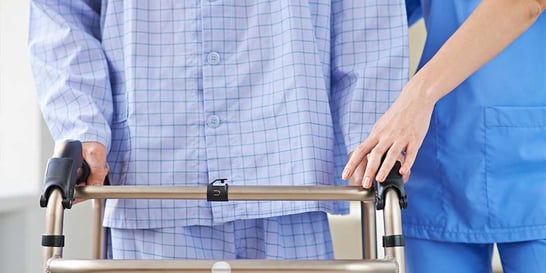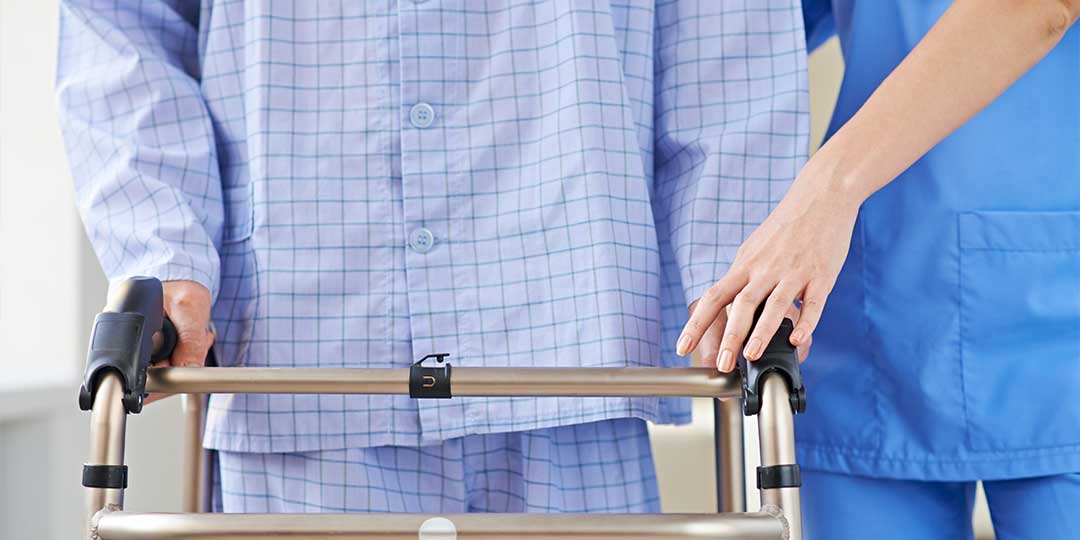 When Intensive Care Unit (ICU) nurses Kerrie Klepfer, BSN, RN, CNIII, and Jennifer LeBlanc, BSN, RN, CCRN, CNIV, were discussing ways to improve patient care, they had no idea that their efforts would save their hospital 2.9 million dollars and inspire similar initiatives across the globe. They just wanted to see their patients experience a safer, quicker recovery.
When Intensive Care Unit (ICU) nurses Kerrie Klepfer, BSN, RN, CNIII, and Jennifer LeBlanc, BSN, RN, CCRN, CNIV, were discussing ways to improve patient care, they had no idea that their efforts would save their hospital 2.9 million dollars and inspire similar initiatives across the globe. They just wanted to see their patients experience a safer, quicker recovery.
Klepfer and LeBlanc are two of four ICU nurses from Duke Raleigh Hospital in Raleigh, N.C., who participated in the American Association of Critical-Care Nurses (AACN) Clinical Scene Investigator (CSI) Academy. Their team developed “Walk This Way: Early Progressive Mobility in the ICU,” a 2013 patient care intervention that encourages mobility in ICU patients.
Nationwide, more than 229 nurses at 68 hospitals have completed or are now participating in the CSI Academy. AACN created the 16-month nursing leadership and innovation training program to empower hospital-based staff nurses as clinical leaders and change agents whose initiatives measurably improve patient outcomes and hospital bottom lines. Participating nurses identify a patient care problem and solution, then work to implement the project to fit the culture of their unit.
“Nurses know what the problems are and they often have ideas for solutions,” said Devin Bowers, RN, MSN, CSI program manager. “Giving them the time to think through their ideas and encouraging their creativity are key aspects of the CSI curriculum.”
At Duke Raleigh Hospital, Klepfer and LeBlanc’s team decided to focus on early progressive mobility.
“In our team’s experience as ICU nurses, the primary practice and standard of care was to keep patients sedated and on bed rest while in the ICU, especially when the patient was intubated,” said Klepfer. “Unfortunately, this extended period of immobility was leading to more extensive rehabilitation and longer hospitalization lengths of stay for patients – and, ultimately, higher costs for hospitals.”
The group produced evidence that increasing mobilization earlier – starting in the ICU – could reduce a wealth of complications, such as muscle atrophy, longer inpatient and outpatient rehab, ventilator associated pneumonia, pressure ulcers, falls, lengthy hospital stays, and cost for patients and hospitals.
The “Walk This Way” project had a tremendous impact within the ICU unit and hospital system. Early progressive mobility is now the standard of care in the Duke Raleigh ICU and is ordered routinely by the team for patients. To date, LeBlanc noted that the program has saved the hospital $2,935,488. Klepfer also noted that at Duke Raleigh Hospital, the protocol was met with excitement from patients and families and even contributed to a significant increase in the ICU’s Hospital Consumer Assessment of Healthcare Providers and Systems (HCAHPS) Scores, a national survey that publicly reports patients' perspectives of care. Additionally, “Walk This Way” received national attention. The team and ICU unit were profiled in the media, including by Forbes magazine, and highlighted at the 2014 AACN National Teaching Institute & Critical Care Exposition (NTI) conference.
According to Bowers, the impact of the AACN CSI Academy extends far beyond the nurses who have participated in the program. Projects have spread within hospitals, cities and across states. Klepfer and LeBlanc’s program even had an impact internationally, when Jai Prakash Narayan Apex Trauma Center, a New Delhi, India hospital, patterned its early mobility project on the “Walk This Way” program.
“Creating sustainable change isn’t just about coming up with the idea. In order for the idea to ‘stick,’ it must become part of the cultural norm in a given unit or hospital,” said Bowers. “Frontline nurses are experts when it comes to knowing what will work and what won’t work within the culture of their unit or their organization. This is one of the key reasons that we believe the CSI Academy has been so successful.”
Nurses and other clinical leaders are encouraged to browse the CSI “Innovation Database,” a catalog of past projects completed through the CSI program. With more than 25,000 unique downloads of project materials, including toolkits, presentations and research, the database is a resource for nurses seeking practice-based solutions to improve patient outcomes and reduce costs.
Bowers believes that the long-term impacts of the AACN CSI Academy are positive outcomes for patients, a network of empowered nurses who are active change agents, and organizations that understand the value of frontline nurse-led initiatives by giving them the dedicated time and resources needed to focus on the work.
“The AACN CSI Academy inspires and empowers nurses by demonstrating the connection between their nurse-driven patient care improvements and corresponding financial impact of the professional practice of nursing,” said Bowers. “In the end, this initiative supports nurses in developing a business case for pursuing better quality outcomes for patients.”
For Klepfer and LeBlanc, participation in the program had additional benefits.
“After completing the project, we noticed a significantly stronger bond within our ICU team and were better able to recognize each other’s unique qualities, capabilities and limitations,” said Klepfer. “This bond has become even stronger over time. Even though the specific project has ended and we are now implementing it, our sense of teamwork and motivation remains.”
“For me,” explained LeBlanc, “involvement in the CSI program meant being a part of leading positive change – and feeling empowered to solve problems in our unit to change standards of care for the better.”
To learn more about the CSI program, visit www.aacn.org.






